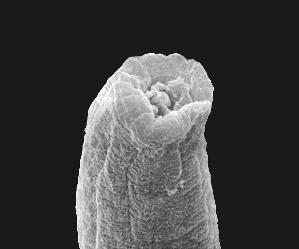“Polly’s ears smell terrible!” “Rascal’s been rubbing his face like mad.” “Mutley’s got brown crumbly stuff coming out his ears.” “Mischief’s been scratching his ears a bit and all of a sudden this morning, he’s wobbly and can’t stand up straight. What’s wrong and what can I do?” These are some of the complaints we hear from our clients with pets that have ear infections. Ear infections are a relatively common problem in pets.
Clinical Signs:
Clinical signs can vary depending on the cause, severity, species and individual animal. Here are some of them:
- Scratching their ears, shaking their heads, rubbing their ears or heads along the ground or on other objects. They may have hair loss and scabs around their faces, ears and necks as a result of severe scratching and rubbing.
- Holding or tilting their heads to one side
- Sensitivity when touched on their ears or heads
- Smelly ears
- Red or swollen ears
- Discharge in the ears – wet appearance, pus or more solid material
- Loss of balance or disorientation
- Deafness
- Depression and irritability
So, what do I do now?
Get your pet checked by a vet. The vet will do a general clinical exam, checking the rest of your pet’s coat and skin as well as his ears. She will examine his external ear flaps (pinnae), ear canals and ear drums.
 Ear mite infestation in a cat. Photo by Uwe Gille
Ear mite infestation in a cat. Photo by Uwe Gille
Sometimes the cause is easy to diagnose e.g. a piece of grass stuck in the ear canal, and other times more complicated. It may be necessary to take a sample and do a smear to examine it under the microscope for any microbial causes. If the cause is not immediately clear or it’s an ongoing infection that does not seem to be responding to therapy, further tests may be required e.g. cultures, skin scrapings or biopsies, blood tests, food trials, allergy tests or X-rays.
What causes ear infections?
There are a number of different causes of ear infections with certain animals being more predisposed depending on their breed, age, environment and general health.
 Ear infection in a dog – swollen, red, discharge present & probably smelly too. Photo by Joe Mills
Ear infection in a dog – swollen, red, discharge present & probably smelly too. Photo by Joe Mills
Here are some of the causes and perpetuating factors which may lead to secondary ear infections:
- Ear mites and other parasites e.g. fleas, ticks, Sarcoptes or Demodex mites, flies and lice.
- Allergies: food or environmental
- Ear anatomy: some breeds have deep or very hairy ear canals that tend to collect a lot of moisture resulting in secondary infections.
- Lots of swimming and humid climates means that ear canals don’t get a chance to dry out resulting in secondary ear infections.
- Yeast infections: usually secondary to an underlying problem e.g. allergy
- Bacterial overgrowth: usually secondary to an underlying problem e.g. allergy
- Over-production of ear wax may result in secondary ear infections
- Foreign bodies: grass awns, small twigs etc.
- Fungal Infections
- Trauma: cat scratch, dog bite or even over-enthusiastic cleaning of the ears
- Growths or polyps in the ear canal
- Immune system disorders or other systemic disease
How are ear infections treated?
Treatment is based on what the vet diagnoses as the cause of the ear infection. If there is a bacterial, yeast or fungal infection, the vet may prescribe antibiotic ear drops or oral medication. Very often extra cleaning of the ears is required. The vet will demonstrate how to do it, give instructions on how often it must be done and the duration of treatment (i.e. the number of days). Occasionally, there is so much debris in the ear canals or they are extremely painful, that thorough cleaning under general anaesthetic is required. Sometimes food trials and other treatment trials are required to rule in or out certain allergies and causes. If a foreign body or polyp is found, surgical removal under general anaesthetic and histopathology lab tests may be necessary. Trauma wounds may need to be surgically flushed and treated under general anaesthetic. Specific medications may be required for treating underlying systemic disease and disorders.
Follow-up appointments may be necessary to check that the ear canals are healing up well. Please don’t skip these – often a pet will show marked improvement in the first couple of days, the owner then thinks it’s all cleared up and stops the treatment early, does not return for a follow-up appointment, only to have a more severe and more resistant infection start up again within a few days or weeks. Also remember that like skin infections, ear infections may take several weeks to clear up, even if there is a simple cause without any complications – don’t give up too soon!
What happens if an ear infection is neglected?
Complications can arise from external ear infections that do not get the correct attention. These include:
- Haematomas and ‘cauliflower’ deformation of the external ear flaps
- Middle and inner ear infections which may be characterised by vestibular disease (vertigo and disorientation), facial paralysis , dry eye (Keratoconjunctivitis sicca) and deafness
- Stenotic ear canals where the ear canals become so inflamed that they can only be treated by surgical resection.
What do I do now?
If you suspect your pet may have an ear infection, please give us a call on (07) 3266 9992 to arrange an appointment as soon as possible. As well as examining your pet, prescribing any necessary medications, we will demonstrate cleaning and treating their ears, and discuss your pet’s unique circumstances and treatments that may be required for prevention. Even if we’ve seen your pet many times, we are always happy to answer any questions or assist with treating if you need help.



